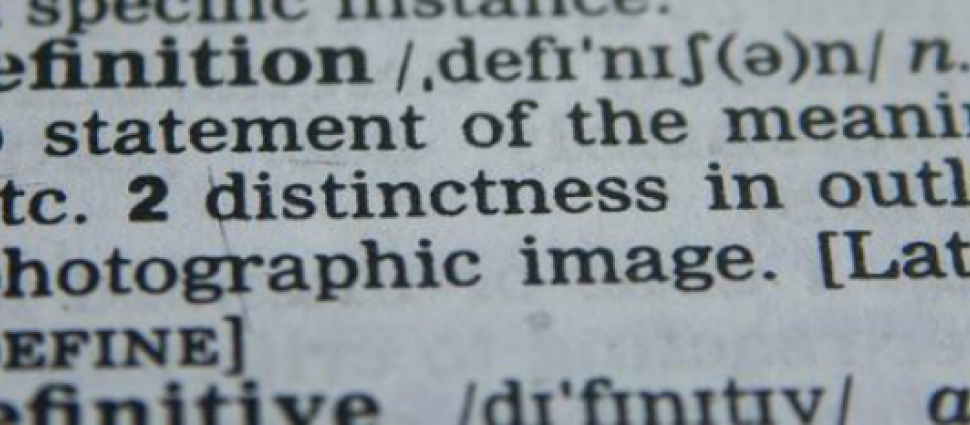"A Puritan is" as Defined by a Puritan

Apr 19, 2016
 We at Meet the Puritans desire to introduce you to the Puritans and their writings. In an earlier post by Mark Jones, he asked, “But, who were the ‘Puritans’?” Here, I want to supplement his answer by turning to John Geree (c. 1601-1649), a self-proclaimed Puritan describing Puritanism.
We at Meet the Puritans desire to introduce you to the Puritans and their writings. In an earlier post by Mark Jones, he asked, “But, who were the ‘Puritans’?” Here, I want to supplement his answer by turning to John Geree (c. 1601-1649), a self-proclaimed Puritan describing Puritanism. Geree, who suffered under the kings James I and Charles I for nonconformity to the church of England, wrote, The Character of an Old English Puritan, or Non-Conformist (1646). He was responding to his old Oxford classmate, John Tombes, who claimed that nonconformists (Puritans) were close kin to the sixteenth-century German Anabaptists. Tombes echoed the earlier sentiments of anti-Puritans John Whitgift and Richard Hooker. Geree was also likely aware of the anti-Puritan Oliver Ormerod’s The Picture of a Puritane (1605) and James I’s A Puritan Set Forth in His Lively Colours (1642) in which the latter defines a Puritan in part as a “phanatick spirit” and “the very plague of the Church and Commonwealth.” Geree’s tract helps to identify a Puritan in the midst of such anti-Puritan spirit.
Most importantly, he says that a Puritan sees the Word of God as the ultimate authority in all of faith and practice individually and corporately. In worship, for example, clear and Spirit-empowered preaching of the Scriptures is most important. Also, the Puritan rejected the corruption of biblical worship but without separating from the church. He took the Sabbath, “the mart day of the soul,” very seriously in a corporate, family, and private manner. He rejected Popish superstition in such practices as fasting and the Lord’s Supper yet regarded the latter truly as “part of his soul’s food,” in communion with Christ. He embraced infant baptism, which reminded him of “his commitments to the Lord and his promises to him.” In addition to the Word and sacraments, he stressed discipline through elder rule not the “monarchical” rule of bishops in the established church or a democratic one exercised by some congregationalists.
The Puritan was concerned for piety in all spheres of life, since “the best Christians should be the best” husbands, wives, parents, children, masters, servants, magistrates, and subjects. He treated his family in some sense as “a church, both in regard of persons and exercises.” He enjoyed God’s material provisions but with moderation and viewed the Christian life as “a warfare, wherein Christ was his captain, his arms, prayers, and tears. The Cross his banner, and his word, Vincit qui patitur” (He conquers who endures).
In summary, Geree identifies a Puritan in terms of his doctrine, piety, worship, and church polity all of which weave together. In this way, we can generally refer to the Puritans as “reformers of the Reformation” according to the Word of God in late-sixteenth and seventeenth-century England. Such “hotter” sorts of Protestants emerged within the nationally established church of England where many were not satisfied with the progress of reform under Elizabeth I, which prompted their opponents to deride them as “Puritans” or “Precisians.” While we observe Puritanism eventually proceed from England to Ireland, Wales, and New England, we still regard it as a historically and geographically conditioned phenomenon. So, guys such as Wilhelmus à Brakel, Thomas Boston, Jonathan Edwards, John Gill, and Charles Spurgeon ministered in the spirit of the Puritans but are not properly called such.
In the end, Geree’s tract (and this post!) does not end the debate about who was a Puritan. For example, he limits his definition to a reforming non-conforming non-separating infant-baptizing non-episcopal Anglican! So, William Perkins as a self-proclaimed conformist is out. John Bunyan has two strikes against him as a separatist and a Baptist. I believe that such limitation is debatable, and I hope that you will at least agree that both these men had greater affinities with and sympathies for the Puritans than any other general category in their respective day. We see no evidence that Geree, writing in 1646, adjusted his definition when the 1649 (the year he died) edition of his tract was published once the state church disintegrated (late 1640s) with the abolition of episcopacy. Likewise, the emergence of a new church establishment during Oliver Cromwell’s Protectorate (1650s) allowed significant latitude in practice and polity (and so conforming non-separatism) outside the restrictions under which Geree wrote. So, as Puritanism flourished then fragmented from the time of Puritan Revolution in the 1640s (when Charles I lost his head) to the anti-Puritan backlash of the Restoration settlement in the 1660s (when Charles II regained his crown), we might want to tweak Geree’s definition without departing substantially. So, should we limit the term, “Puritan”? Indeed. Still, we need not go too hard on ourselves for making it a little more inclusive than Geree.
*See Our Resources page on how to get a copy of this tract as a pdf or booklet.





